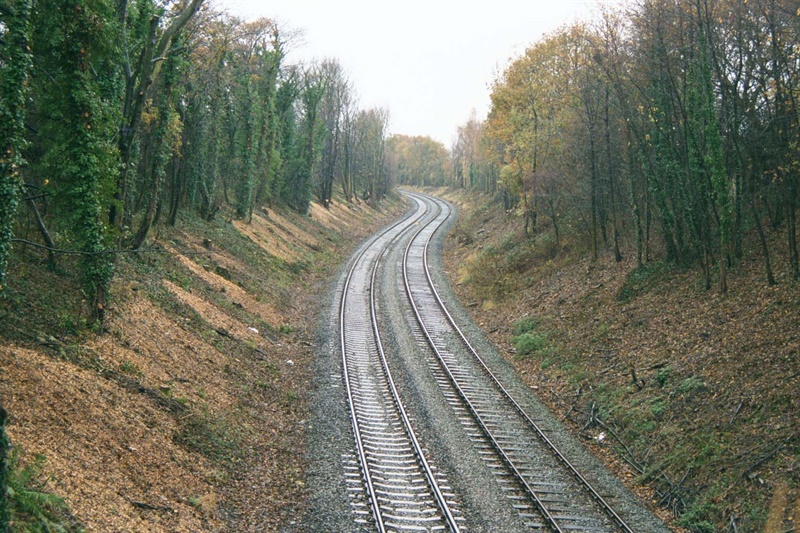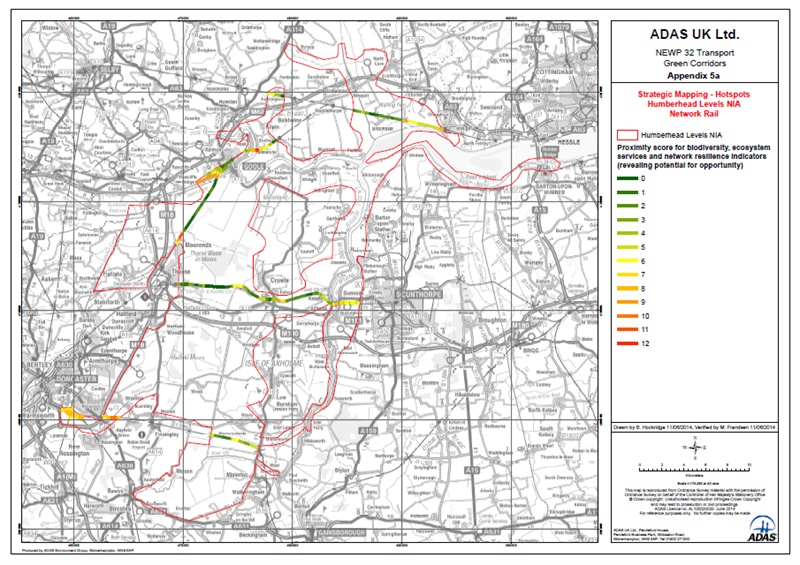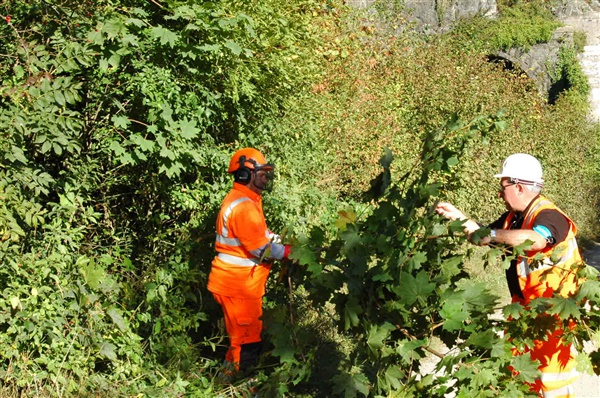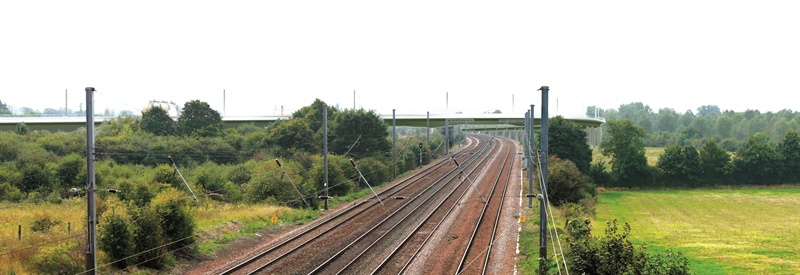01.11.14
Changing the way we manage trackside vegetation
Source: Rail Technology Magazine Oct/Nov 2014
An innovative research project developed in response to the government’s Natural Environment white paper could change the way vegetation next to rail tracks is managed, delivering biodiversity gains and ecological connectivity as well as improving the resilience of rail infrastructure to climate change, says Marion Frandsen, senior landscape consultant at ADAS, the national agricultural and environmental consultancy.
Most environmental research projects provide answers, but few have the capacity to bring about widespread management changes. This is what makes the current project, known as NEWP32, so exciting and why it has the capacity to make such an impact. From the rail industry’s perspective, it will form the basis of how we can work with the 20,000 miles of ‘soft estate’ – the land adjacent to Britain’s rail tracks.
The project aims to deliver significant environmental improvements at key ‘hotspots’. These are sections of soft estate with the greatest potential to deliver biodiversity, network resilience to climate change and wider environmental benefits, such as improvements to water quality (identified through a spatial mapping tool) which will then contribute to the ecological network of the wider countryside.
The collaborative nature of the project is key to its success. Commenced in November 2013 in response to the government’s Natural Environment white paper (NEWP), it is being delivered through a partnership between Natural England, Network Rail, the Highways Agency and the Nature Improvement Area (NIA) Partnerships. The commitment of these stakeholder organisations takes the project from the realms of theory into practice.
All partner organisations have been deeply involved, actively participating in expert workshops, consultations and the production of the initial research report, due to be published by Natural England imminently. At the outset there was a detailed consultation with Network Rail staff in the NIA pilot study areas of Morecambe Bay and the Humberhead Levels.

Tree risk and surveys
ADAS was commissioned to deliver the first phase of the project. We have many years’ experience of delivering large-scale collaborative projects within the environmental sector, including extensive work related to infrastructure corridors. In particular we were able to draw on our practical experience in delivering large-scale lineside tree surveys, as well as our tree risk models developed with Scottish Power and Lancaster University. ADAS is also currently undertaking an extensive and innovative LiDAR survey of vegetation near overhead lines for UK Power Networks, covering some 19,000 miles of lines in the south east and east regions, in collaboration with Bluesky Ltd.
In the initial phase of the NEWP32 project, ADAS carried out a detailed literature review to establish how, and the extent to which, transport corridors are providing environmental benefits in the UK and beyond. Working alongside Network Rail and the other project partners, we used geographic information systems (GIS) to establish where practical land management would best be applied along transport corridors to achieve the greatest environmental benefits. This research and analysis is detailed in ADAS’s initial research report, which represents the final output of the first phase of the project.

The value of scrubland and coppiced woodland
The project has brought a number of management issues into clear focus. Much is known about the risk presented by the failure of trees, but our findings so far have also shown, for example, the value of scrubland and coppiced woodland. In some cases, they provide a complementary and alternative habitat to woodland.
Alongside this, the project has also identified the potential to enhance and extend species-rich grassland on the rail soft estate, which is a high priority habitat particularly in relation to pollinators. Furthermore it could help to support the objectives set out in the National Pollinator Strategy. This brings together pollinator-friendly initiatives in response to the declines in the health and populations of bees and other pollinators seen globally as posing a risk to biodiversity, long-term food security and ultimately human health.
A key factor in this novel approach is the consideration of the railway corridor’s vegetation as part of a wider ecological network of habitats. The strategy developed takes this into account by encouraging the alignment of vegetation management on the transport soft estate and neighbouring landowners’ land so that environmental benefits are delivered on a broader scale.
In addition, the project has shown that management strategies can deliver multiple environmental benefits. As heavy rainfall is becoming more prevalent, sustainable drainage systems (SuDS) such as soakaways and balancing ponds are identified as key soft estate design features that can improve both water quality and reduce flood risk caused by run-off. At the conclusion of the project’s first phase, management options have been developed for key priority habitats including woodland, grassland and wetland. Network Rail is now looking at implementing these management options in up to six opportunity areas identified in each of the two NIAs in Morcambe Bay and Humberhead Levels.
The wider benefits
Going into the second phase of the project (to be undertaken over a period of three years), dedicated local project officers are now being appointed, working with the NIA partner members and Network Rail to ensure environmental baseline monitoring work is completed. They will monitor the extent of ecological and wider environmental benefits and the extent to which the operational risks are minimised.

At the end of the three year period these officers will report on the key findings. The aim is then, in conjunction with the findings of the initial research report, to inform the company’s wider land management practice across the remainder of the Network Rail soft estate.
In addition to this commitment to change, Network Rail and the Highways Agency also bring an immense land resource to the project. Network Rail’s soft estate covers some 20,000 miles and contains over 200 Sites of Special Scientific Interest (SSSIs). The Highways Agency manages 22,000 hectares of land, supporting a wide range of habitats, including over 40 million trees. Other large-scale infrastructure managers such as National Grid have also expressed interest in the project’s findings.
NEWP32 is not just another study. It has already delivered value beyond its initial conception in the white paper as a Natural England research project. A novel and collaborative approach has been developed, which is going to lead to change and long-term environmental benefits at a national scale.
The value will be seen initially in the two selected NIAs, but in time the project will extend to other areas. Going forward, we expect NEWP32 to influence the future management of all transport and infrastructure corridors in the UK.

Tell us what you think – have your say below or email [email protected]
(Top image: Alvey & Towers)